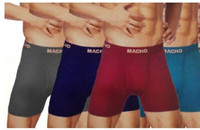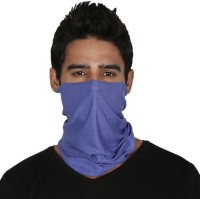How To Pick Safe Plastic Jewellery For Kids Online: 10 Tips To Avoid Skin Irritation
From rainbow bangles to animal-shaped earrings, plastic jewellery is a childhood favourite. But when shopping online, safety often hides behind sparkles. So, if you want to stop your kids' skin suffering from irritation, here is how to pick safe plastic jewellery for kids and that too online.
Keep Kids' Skin Happy: Know How To Choose the Best Plastic Jewellery Online.
Tiny plastic bangles clinking with every arm movement, beaded necklaces worn proudly like royal treasures, and glittery rings that light up at the flick of a wrist, children and plastic jewellery go together like birthday parties and balloons. But while colours and shapes grab attention, it's what the eyes can't see that matters most: the safety of the material.
In recent years, parents have turned to online shopping for convenience, selection, and often better prices. Yet with that ease comes uncertainty. A product might look perfect in pictures, but end up causing irritation or worse when it arrives at the doorstep. Kids have delicate skin, and their love for dress-up shouldn't come with allergic reactions or rashes.
This guide unwraps everything you need to know before clicking ‘Buy Now' on that adorable jewellery set. From understanding labels to checking reviews, these tips will help you shop smart and safe, because style should never come at the cost of comfort. So, if you want to stop your kids' skin suffering from irritation, here is how to pick safe plastic jewellery for kids and that too online.

How to Choose Non-Toxic Plastic Jewellery for Kids That Will Not Cause Rashes; Photo Credit: Unsplash
1. Check the Label for BPA-Free and Phthalate-Free Materials
The label is your first line of defence. When browsing jewellery for kids, always zoom in on the product description. Look specifically for terms like 'BPA-free' and 'phthalate-free', these are chemical compounds that are commonly found in plastics and are known skin irritants.
BPA and phthalates are used to make plastics flexible or clear, but they're not suitable for little ones who might have sensitive skin or a habit of chewing on their accessories. Long-term exposure can trigger allergies and even affect hormonal development.
If the product doesn't clearly mention being free from these chemicals, it's safer to skip it. Look for brands that highlight safe manufacturing processes, especially those that meet global safety standards. In short: no clarity on ingredients? No click on ‘Add to Cart.'
2. Avoid Sharp Edges and Tiny Parts That Can Hurt or Be Swallowed
Let's be honest, kids aren't exactly known for sitting still. They jump, dance, roll, and run. Their accessories should keep up, not cause cuts or choking hazards. When buying plastic jewellery online, check the product images and dimensions carefully. Anything that looks pointy or too small should raise a red flag.
Look for smooth edges, flexible materials, and items labelled 'safe for toddlers' or 'no small parts.' Remember, children under five are still exploring the world mouth-first. An earring shaped like a strawberry might end up between their teeth, and if it's detachable or too tiny, that's a risk no parent wants to take.
If reviews mention that the product broke within days or had pieces come loose, move on to a sturdier option. Safety isn't just about material; it's also about smart design.
3. Read Verified Customer Reviews, Especially Those with Photos
No marketing copy can beat a parent's honest review. Before buying, scroll straight to the review section and pay close attention to what people are saying about skin reactions, durability, and overall quality. Focus especially on reviews that include photos or are marked as 'Verified Purchase.'
Sometimes, a product that looks great on the website arrives feeling cheap, smells odd, or even causes rashes. If more than one reviewer mentions a strong chemical smell or their child develops irritation, it's best to steer clear.
Even better, look out for comments that mention how long the jewellery lasted, how the colours held up, or how well it fit smaller wrists and necks. These real-world stories are gold, far more reliable than a shiny photo shoot.
4. Look for Trusted Brands or Sellers With Return Policies
While new brands can offer lovely surprises, when it comes to children's accessories, trusted names provide peace of mind. Stick to online stores or marketplaces where sellers have solid reputations and, importantly, return policies.
Trusted brands often list their safety certifications and test results. They may also be more responsive if you raise concerns. A good return or exchange policy is essential, because if the jewellery causes discomfort or turns out to be too tight, you should be able to return it without a fuss.
Don't forget to check the seller ratings too. Sometimes, third-party sellers on popular sites offer knock-off versions of popular products. So, while the price may be tempting, the risk isn't worth it, especially when it's your child's comfort on the line.
5. Prefer Hypoallergenic And Dermatologically Tested Options
Skin sensitivity isn't just a grown-up problem. Children, especially toddlers, have thinner, more delicate skin that reacts faster to irritants. That's why hypoallergenic plastic jewellery is the safest bet. These are specifically designed to reduce the chance of allergic reactions.
Search for products labelled 'dermatologically tested.' This usually means the jewellery has been tested on human skin and cleared by professionals for regular wear. Though these items may be a few rupees more, the relief of not having to deal with itchy wrists or red ears is worth every extra paisa.
Also, jewellery made from medical-grade plastic or silicone often falls under the hypoallergenic umbrella. Keep an eye out for those terms while browsing online.
Also Read: How To Choose Earrings Or Belts To Transform Your Look: Harness The Power Of Accessories
6. Stay Away from Glitter-Coated Or Painted Jewellery
That dazzling sparkle might catch your child's eye, but glitter-coated jewellery often hides hidden dangers. Many of these coatings aren't sealed properly, which means flakes can fall off and get into eyes, mouths, or cause skin irritation.
Painted pieces pose another problem. Unless they're certified non-toxic, the paint could contain harmful chemicals like lead, yes, even in children's products. Lead in paint is especially harmful when ingested, and kids are prone to putting accessories in their mouths while playing.
Instead of glitter-covered trinkets, go for jewellery that gets its colour from the plastic itself, not from coatings. These tend to be longer-lasting and far safer.
7. Check Sizing Carefully To Ensure Comfortable Fit
Children grow like monsoon grass, and jewellery that's too tight can cause more harm than good. Tight bangles might leave marks, while oversized ones could fall off and break. Since you can't physically try the pieces on when shopping online, size guides become your best friends.
Most good sellers will provide detailed dimensions. Compare them with measurements from your child's current accessories or use a measuring tape for reference. Necklaces should be short enough not to tangle but loose enough to be comfy. Rings and earrings must never pinch.
It's also smart to buy adjustable jewellery. Some bangles and necklaces come with expandable designs or stretchy cords. These options offer more flexibility and fewer chances of a tantrum.

How to Choose Non-Toxic Plastic Jewellery for Kids That Will Not Cause Rashes; Photo Credit: Unsplash
8. Watch Out for Overpowering Scents or Artificial Fragrances
Some plastic jewellery sets, especially imported or unbranded ones, come with a strange smell right out of the box. These fragrances might seem harmless at first, but they can be a sign of chemical residue or poor-quality plastic.
Perfumed accessories might feel like a fun bonus, but strong synthetic scents are often added to mask the smell of low-grade materials. These are not only unpleasant but could cause allergic reactions or even breathing discomfort in sensitive kids.
Always check reviews for mentions of scent, and if a product arrives with a strong chemical odour, let it air out for a day or two before use, or better yet, return it. Accessories should be cute, not cloying.
9. Avoid Overly Cheap Sets That Offer Too Much for Too Little
It's tempting, no doubt, a set of 30 bangles, 10 rings, and 5 necklaces for ₹149? Sounds like a jackpot. But when a deal sounds too good to be true, it usually is. Ultra-cheap jewellery often means corners were cut in materials, safety checks, or production standards.
Instead of focusing on quantity, aim for quality. One well-made, safe bracelet is better than a dozen that might snap or cause rashes. Remember, if a product's price is way below the average for similar items, it likely hasn't been through the same safety vetting.
A good tip? Check if the brand explains why its product is affordable. Transparency is a sign of trustworthiness. If all you see are flashy photos and a rock-bottom price, walk away.
10. Choose Simple, Easy-to-Clean Designs
Jewellery that spends time with children is bound to get dirty. Sticky fingers, muddy hands, and surprise snacks can all leave their mark. That's why choosing jewellery that's easy to clean is a smart move.
Avoid overly intricate designs with tiny grooves or dangling charms; they're harder to clean and more likely to trap bacteria. Instead, go for smooth finishes and solid pieces that can be wiped down or even washed with mild soap and water.
Silicone and medical-grade plastic often win here, too. They're not only safe but also super easy to maintain. And let's face it, anything that cuts down cleaning time is a blessing.
Products Related To This Article
1. YELLOW CHIMES Resin, Alloy Multicolor Jewel Set
2. SYGA 5 Piece Jewellery Set for Girls, Necklace, Earrings, Bracelet & Ring For Kids Beads Plastic Necklace Set
3. Anjali Creations Plastic Agate Ring Set
4. AVC kid's Necklace, Delite Neck, Necklace for babys, Plastic Necklace Set Beads Plastic Necklace
5. Tera13 Plastic Bracelet Set
Plastic jewellery may be a playful expression of childhood, but it shouldn't come at the cost of comfort or safety. In the world of online shopping, the brightest piece isn't always the best choice. With a bit of caution, a sharp eye for detail, and these ten trusted tips, you can make sure your little one shines, rash-free and happy.
After all, accessories are meant to add joy, not worry. So the next time that pink unicorn necklace pops up on your screen, don't just ask, 'Is it cute?' Ask, 'Is it safe?' Because a smiling child in safe jewellery? That's the real sparkle. Shop now on Flipkart.













